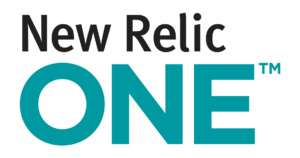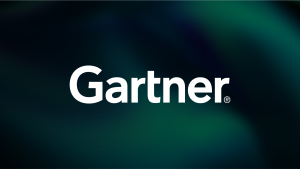New Relic customers share a common passion: building great software. New Relic shares in that passion. Our mission is to instrument, measure, and improve the internet to help our customers create more perfect software-driven experiences and businesses.
 Modern software systems are more powerful than ever, giving software builders the opportunity to create truly amazing digital experiences at unprecedented scale. But with innovation comes more complexity. Conquering today’s biggest, most important software challenges requires visibility across increasingly dynamic technology stacks, insight into the relationships and dependencies between hundreds or even thousands of services, and seamless collaboration across many teams.
Modern software systems are more powerful than ever, giving software builders the opportunity to create truly amazing digital experiences at unprecedented scale. But with innovation comes more complexity. Conquering today’s biggest, most important software challenges requires visibility across increasingly dynamic technology stacks, insight into the relationships and dependencies between hundreds or even thousands of services, and seamless collaboration across many teams.
To overcome these challenges at enterprise scale, you need observability that is both strategic and pragmatic. Leaders need a broad view of their world, and engineers need pinpoint accuracy. A unified view into data, and how it all connects, is essential to finding and solving the inevitable problems that get in the way of building great software.
New Relic One—the next evolution of the New Relic platform—is designed to give you exactly that. It connects all the data you need to understand your increasingly complex and interdependent systems. With New Relic One, you will:
- Cut through the complexity of your enterprise and see across organizational boundaries while maintaining secure data access.
- Troubleshoot with confidence with distributed traces and enterprise-wide maps.
- Make the experience yours by easily building custom views and dashboards that visualize the information you care about most.
New Relic One will help you find, visualize, and understand everything you need to create more perfect software.
An entity-centric point of view
Every piece of data has a source, and every source is an entity that needs to be monitored. Applications, services, hosts, containers, AWS Lambda functions, VMs, cloud services, Kubernetes pods—all are examples of entities. Each entity in your system exists for a reason—it does a job, accomplishes a unit of work, or serves a unique business purpose. When entities work as they should, outcomes arrive quickly and are of high quality. Customers are happy and satisfied.
But entities typically have dependencies; they seldom run in isolation. For many teams, the reliability of their own entities is dependent on other entities owned by other teams. An effective observability platform must be able to see across all entity interdependencies.
New Relic One takes an entity-centric point of view of your systems and services, so you can see across all those entity interdependencies. That means we give you the ability to look at all the entities that come together to deliver digital experiences.
Cut through the complexity of your enterprise
Enterprises with complex technical environments often have dozens, sometimes hundreds, of teams. Often teams break up systems and data into different vendor accounts to simplify organization. Some environments have data restrictions for different groups of employees, meant to protect sensitive information. For example, different business units may use different cloud provider accounts or different New Relic accounts. New Relic One slices through those separations by identifying and indexing entities as it ingests your data, tracking their complex relationships to each other. You then visualize your system and monitor the entities that matter to you based on your organizational permissions.
Key New Relic One features such as global search, entity explorer, and tag APIs are designed to give you fast access to the information and context you need, no matter where it comes from:
- Global search: Your digital system is made up of many parts, owned by many teams and departments, which can complicate root-cause troubleshooting. Global search in New Relic One speeds problem solving by letting you search across domains—from mobile to applications to infrastructure—and across your enterprise to get clear views into the organizational structure of your system.

New Relic One global search lets you search for entities across your entire enterprise. - Entity explorer: The entities you care about likely span several New Relic accounts and products. When you’re troubleshooting a problem, you need quick summary data to know if a service, mobile app, or cloud integration warrants further investigation. The New Relic One entity explorer shows you every entity from every account and gives you an organized navigation layer so you can see everything you monitor in one place, and quickly zoom into what you care about most.

The entity explorer’s organized navigation layer makes it easy to explore the entities you care about. - Tag API: Tags are ubiquitous in modern software systems. In New Relic One, you can use those tags to organize your entities and data. Use New Relic’s GraphQL API to add tags to what you monitor, so you can quickly search for just the systems that are relevant to the job you’re doing. For example, add a specific tag to each host, app, or dashboard you manage. Configure key-value pairs to tag entities, and then use tag-based filtering to narrow your views as needed.
- Relationship API: Your digital system is composed of many different entities that work together. New Relic One automatically creates and maintains visibility to those relationships—without requiring manual work on your end. Use the GraphQL API to retrieve entities and their relationships for integration with other business tools or systems in your enterprise, or for taking point-in-time snapshots of your system.
Troubleshoot with confidence
Build software faster and deploy more frequently using the context New Relic One delivers. New Relic One provides navigation through all entities, so you can look into the dependencies of your applications, from single event traces to end-to-end workflows. New Relic One debuts new features and leverages existing New Relic capabilities that make it easy to quickly correlate and identify anomalies across all the systems in your enterprise, and then drill into the New Relic platform to find deeper root causes:
- Entity summary: After you’ve identified an entity of interest, the entity summary gives you the information you need to quickly decide if you want need to dig deeper, or pull out to a broader view and explore more entities. The entity summary shows upstream and downstream dependencies, and provides paths to explore them. It’s the entry point to New Relic’s deep diagnostic tooling, enabling you to drill deeper as you investigate the root cause of a problem.

Use the entity summary to learn more about an entity and decide whether to explore deeper. - Service maps: With an improved view into your services and their health, you’ll get better context of their upstream and downstream dependencies to quickly identify root causes when troubleshooting incidents. New Relic One service maps connect entities across all the accounts you can see, so teams can collaborate quickly to get to the root cause of a problem.

Service maps provide a full view into all service entity interdependencies. - Distributed tracing global search: Find any trace with an attribute—even if only one service within the trace carries the attribute you care about—or search for specific distributed traces using advanced search for distributed tracing. Additionally, new visualizations in New Relic One make performance tuning and troubleshooting even easier than ever before.

Dive deep into traces with advanced search functionality.
Make the experience yours
New Relic One lets you extend visibility and customize views to fit your specific needs. A new guided chart builder makes it easy to create powerful custom dashboards combining connected data. Augment your data with tags through a flexible API to quickly create views focused on only what you care about for understanding your digital business:
- Dashboards: Create information-dense custom views into the data that matters most to you, with a rich set of built-in features to make them easy to understand and use. Already have dashboards in New Relic Insights? Not a problem—your existing dashboards will automatically appear in New Relic One for viewing and editing.

Dashboards are custom-views into the data produced by your entities. Chart builder: Use New Relic One’s new point-and-click query creation tool to easily retrieve your data with your own powerful queries. For new users, this is a great entry point into the New Relic Query Language (NRQL).

Use the New Relic One chart builder for point-and-click creation of NRQL queries.
Get started New Relic One
New Relic One is available to all New Relic customers with a Pro subscription or to those engaged in a free trial. Visit New Relic One, or take a two-minute guided tour through the New Relic One Discovery Center and learn about new tools for understanding and fixing problems in your software. Be sure to check out New Relic One documentation or reach out to your account team for additional information.
Learn more about New Relic One at newrelic.com/platform.
Additional New Relic One resources
- New Relic One
- New Relic One press release
- New Relic One data sheet
- Introducing New Relic One: Our Platform for the Next Decade
- New Relic One: Deliver More Perfect Software Faster
- New Relic One: Why Be Entity-Centric?
- Dashboards in New Relic One: A Faster Path to Action
- Global Trace Search in New Relic One: A Better Way to Work with Custom Attributes
- New Relic documentation: Introduction to New Relic One
- Introducing New Relic Monitoring for AWS Lambda
As opiniões expressas neste blog são de responsabilidade do autor e não refletem necessariamente as opiniões da New Relic. Todas as soluções oferecidas pelo autor são específicas do ambiente e não fazem parte das soluções comerciais ou do suporte oferecido pela New Relic. Junte-se a nós exclusivamente no Explorers Hub ( discuss.newrelic.com ) para perguntas e suporte relacionados a esta postagem do blog. Este blog pode conter links para conteúdo de sites de terceiros. Ao fornecer esses links, a New Relic não adota, garante, aprova ou endossa as informações, visualizações ou produtos disponíveis em tais sites.



